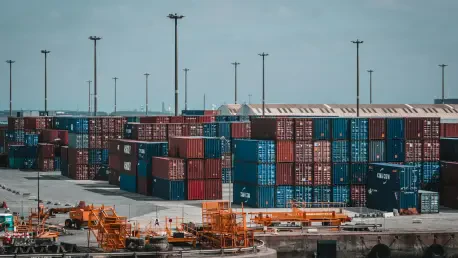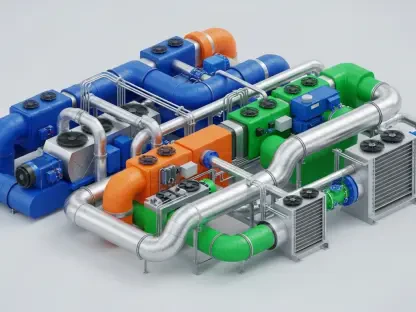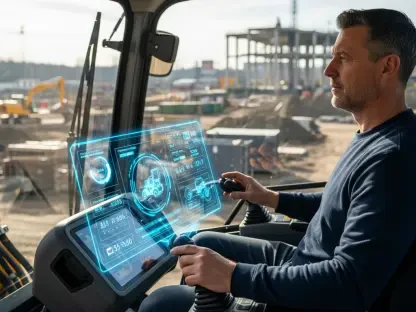The logistics sector is pivotal in shaping global efforts toward sustainability, representing a significant portion of worldwide carbon emissions. Today, amid growing environmental challenges, innovative digital freight solutions emerge as a vital approach to achieving a more sustainable future. Collaborations between industry leaders such as Nestlé and sennder showcase effective models for reducing emissions and optimizing logistics operations. As companies strive for net-zero emissions targets, understanding and implementing best practices in digital freight innovation becomes crucial for sustainability.
Role of Digital Innovation in Sustainable Logistics
Within the logistics industry, digital innovation plays a critical role in reducing environmental impacts. As a significant contributor to global emissions, logistics must evolve to embrace sustainability through technology. Digital solutions offer transformative potential by enhancing efficiencies and minimizing the footprint of traditional logistics operations. Key areas of digital innovation, including route optimization, the adoption of electric vehicles, and the use of alternative fuels, form the backbone of sustainable logistics practices.
Empirical data supports the shift towards digital freight solutions, showing notable reductions in emissions. Nestlé’s partnership with sennder illustrates the effectiveness of these innovations, where over 3,000 green loads have been transported, reducing over 2,000 tonnes of CO2e annually. Utilization of electric trucks and renewable diesel exemplify strategic moves toward sustainability, demonstrating the tangible impact of digital solutions in achieving environmental goals.
Benefits of Implementing Digital Freight Solutions
Embracing digital freight innovations isn’t just a matter of environmental responsibility; it’s an opportunity to improve business operations across several dimensions. Implementing these solutions leads to significant reductions in emissions, operational costs, and energy use. By optimizing routes and maximizing loads, companies can achieve greater efficiency and sustainability simultaneously.
The transition to digital freight solutions results in cost efficiency gains and enhanced operational performance, providing competitive advantages in the logistics sector. Businesses adopting these technologies benefit not only from reduced carbon footprints but also from improved reliability and productivity. As companies invest in alternative fuel vehicles and advanced logistics technologies, they align economic and ecological goals in an increasingly eco-conscious marketplace.
Best Practices for Achieving Sustainability through Digital Freight Innovation
Optimizing Transport Efficiency
Transport efficiency is crucial in minimizing emissions within logistics operations. Route optimization and load maximization are pivotal strategies to enhance efficiency and sustainability. By integrating sophisticated algorithms to determine optimal routes, companies significantly reduce fuel consumption and environmental impact. Load maximization further supports sustainable logistics, ensuring that each journey maximizes freight capacity and minimizes others.
Case Study: Real-World Application of Route Optimization in Reducing Emissions
Nestlé’s collaboration with sennder exemplifies successful implementation of route optimization. By integrating smart routing systems, Nestlé has achieved approximately 55 tonnes of CO2e savings annually, showcasing concrete benefits of digital freight innovations. These efforts underscore the importance of strategic planning and technological integration in achieving sustainable logistics.
Adopting Electric and Alternative Fuel Vehicles
The shift toward electric vehicles and alternative fuels is essential in transforming logistics sustainability. Electric trucks offer significant emission reductions with zero tailpipe emissions, while alternative fuels like renewable diesel present a viable, environmentally friendly option. Transitioning to these technologies requires careful planning but yields substantial environmental benefits.
Example: Successful Deployment of EVs in Urban Logistics
Nestlé’s deployment of electric trucks in North Rhine-Westphalia highlights success in adopting electric vehicles for urban logistics. This move has proven effective in reducing emissions while maintaining shipping efficiencies. The initiative underscores urban logistics as a key area for electrification, enhancing both sustainability and operational feasibility.
Conclusion and Future Outlook
Over recent years, digital freight innovation has proven vital in moving logistics toward a sustainable future, offering valuable insights for companies committed to reducing emissions. By integrating electric vehicles and optimizing transport operations, businesses have redefined efficiency through sustainable practices. The collaboration between Nestlé and sennder serves as a blueprint for embracing transformative technologies within logistics, setting industry standards for scalability and investment considerations.
As companies reflect on these practices, the long-term environmental and economic benefits should drive continued investments in digital freight solutions, ensuring that logistics operations contribute meaningfully to global sustainability goals. Embracing these practices enables a competitive edge, provided businesses plan thoughtfully for each step on their sustainability journey.









